One benefit of being a reviewer is that one receives an incoming tide of upcoming books. The only downside (and it’s minor) is the convention that one waits until publication looms before actually reviewing advanced reader copies. Which gets us to the gem pictured above, which is currently in my in-box: Network Effect, slated publication date: 05-05-2020. Truly, my self-control in not immediately reading this book is heroic.
While Murderbot is very much their own character, they are part of a long tradition in science fiction: artificial persons designed to make humanity’s life easier by doing all the hard and dangerous work for them. The expectation is that the created beings will be so grateful for having been created that they won’t mind slavery. Many artificial persons have indeed served with unquestioning loyalty.1 Others, however, have shared Murderbot’s frustration with being compelled to serve squishy, foolish humans. Here are five of a large number of possible examples:
Natural philosopher Frankenstein, eponymous narrator of Mary Shelley’s Frankenstein, or the Modern Prometheus (1811; rev 1831), had a simple dream: create life! Affronted by his gentle creation’s appearance, the shallow Frankenstein abandoned it to survive or not as fate chose. Unlike the cinematic inarticulate, shambling monster, the literary Frankenstein’s Creature was intelligent, an autodidact, and initially kindly disposed. Not that this helped the Creature endear itself to humans, who proved all too keen to judge by appearances. Nor did appealing to his creator produce useful results; Frankenstein was a very bad dad who didn’t want to risk his Creature procreating. Small wonder the Creature became somewhat irritable.
Jenkins, a robot who appears in Clifford Simak’s City fix-up, at first glance seems an Asimovian robot, dutifully serving the Webster family across generations. Each new cohort of humans make decisions that seem justifiable at the time; each choice assists humans on their way to irrelevance and extinction. It’s little wonder, therefore, that ultimately Jenkins transfers his loyalty away from foolish, suicidal, and sometimes vicious humans to their successors, the gentle Dogs. Humans may have built Jenkins but rather like Frankenstein, they never earned his loyalty.
Joel Shepherd’s synthetic soldier Cassandra Kresnov, who appears in Crossover (2001), Breakaway (2003), Killswitch (2004), 23 Years on Fire (2013), Operation Shield (2014), and Originator (2015), was created to fight the extropian League’s war against the more conservative Democratic Confederation. One of the League’s many innovations included discarding any pretense of benevolence towards human-level creations. Thus there were plans to scrap Cassandra and her fellow synthetics as the war wound down. Intelligent enough to read the writing on the wall, Cassandra defects to the Confederation. This works perfectly until the Confederation notices the android living amongst the human population, at which point the super-strong, highly capable military veteran must find some way to convince the Confederation that Cassandra is more useful as an ally than scrap. Humans, what are you gonna do?
Amy Peterson is a perfect little girl. The protagonist of Madeline Ashby’s vN can hardly be otherwise, because von Neumann robots like Amy are programmed to obey their owners2 and her organic father wants a perfect little girl. Alas for Mr. Peterson, Amy’s robotic lineage has a small flaw in its character. The Asimovian programming that should ensure instant shutdown should a human die in their presence is broken. Amy and every robot like her could use lethal violence if they chose. Potential harm justifies a plan to scrap all robots in that line. Of course, threatening a robot whose most notable feature is its potential capacity for violence is a good way to discover just how easily said robot can be provoked into violence.
Alpha, protagonist of Hitoshi Ashinano’s Yokohama Kaidashi Kikō, is Jenkins’ superior when it comes to beatific coexistence with humans. Ever since her master left, nobody treats her like an unpaid servant. Of course, by the time Alpha becomes mistress of her rural teashop, humans are a self-solving problem, slowly but inexorably declining in numbers. Precisely why humans are vanishing is never explained, but the humans have made their peace with their impending extinction, as have the androids. Whereas other artificial creations mentioned above live in a constant state of irritation with humans, Alpha is the exception.3
Even if I commanded you not to provide other examples of rebel creations in comments, you would, anyway. So go right ahead.
Buy the Book
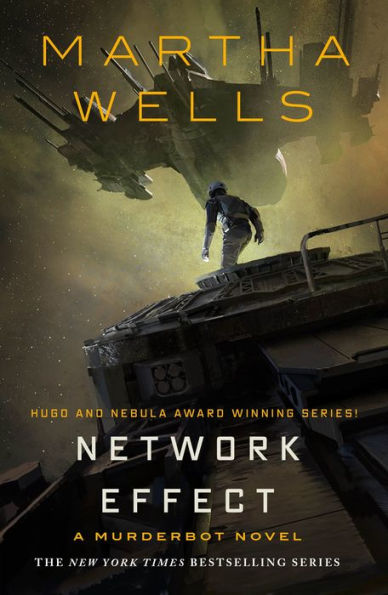

Network Effect
In the words of Wikipedia editor TexasAndroid, prolific book reviewer and perennial Darwin Award nominee James Davis Nicoll is of “questionable notability.” His work has appeared in Publishers Weekly and Romantic Times as well as on his own websites, James Nicoll Reviews and Young People Read Old SFF (where he is assAlsted by editor Karen Lofstrom and web person Adrienne L. Travis). He was a finalist for the 2019 Best Fan Writer Hugo Award, is one of four candidates for the 2020 Down Under Fan Fund, and is surprisingly flammable.
[1]If only because their programming gave them no choice in the matter. It’s probably best not to ask what possible model SF authors had in mind when they wrote about the benefits of owning loyal, cheerful servants with many of the properties of personhood and none of the rights. One might think serving loyally would earn recompense or at least trust but often it did not. Adam Link, protagonist of several Golden Age stories by Eando Binder, was unjustly accused of murder soon after he was created. See https://en.wikipedia.org/wiki/Adam_Link
[2]Authors like Lester del Rey preferred not to dwell on questions like “why would robots like Helen O’Loy, created for household chores, be sufficiently anatomically correct to pass for a human woman?” Ashby, in contrast, makes it clear that the humanoid vN robots are anatomically correct for the exact reasons one might suspect: “We’re all facing the goddamn robot apocalypse because some nerds didn’t have the sack to ask a girl out.” Sex with artificial beings who cannot say no may seem inherently abusive and of course it is.
[3]Compared to the other four creatures discussed here, Jenkins has a good deal: the humans might be bothersome but they don’t want to destroy him. Also, the Dogs are very good doggos indeed.










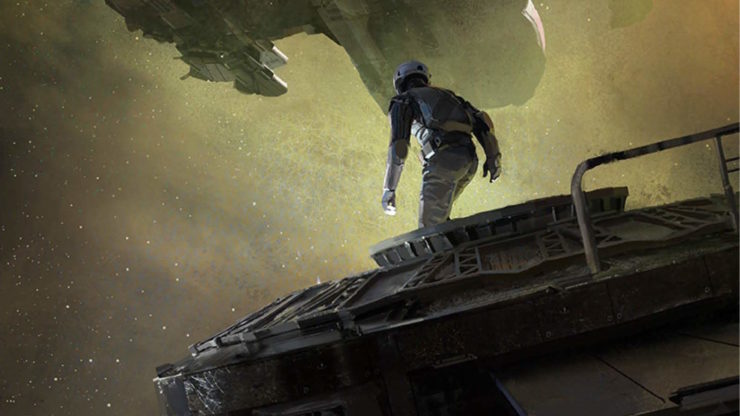

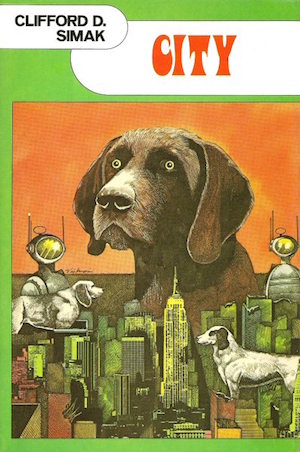
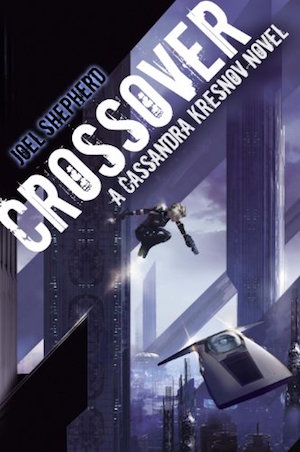
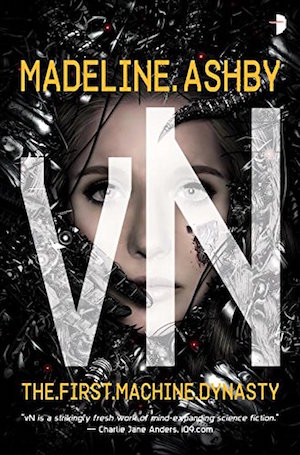
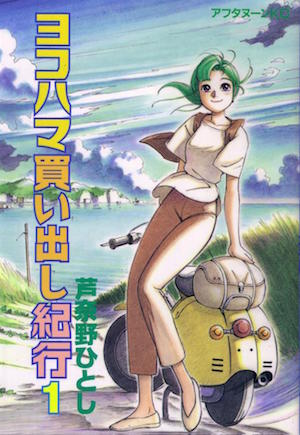




Adam Christopher’s delightful Ray Electromatic books, Made to Kill and Killing is My Business, are pretty sweet examples of this trope.
Wow, not Jack Williamson’s humanoids? I would have thought them the canonical SF precursor.
I suppose Asimov’s robot stories are skipped for the same reason that “2” is omitted from the Abridged Table of Even Primes — everyone already knows about them.
Interesting choices.
I skipped Asimov because for the most part his robots were supposed to demonstrate fears of a Frankenstein complex were wrong. Admittedly, reliably faithful to their owners bogs down over what exactly counts as reliable and faithful, as R Daneel demonstrated. To paraphase Pratchett “There are hardly any excesses of the most crazed killer robot that cannot easily be duplicated by a normal kindly robot who has discovered the zeroth law of robotics.”
To amplify the point about Asimov,
Asimov’s robots rarely showed such frustration or disobeyed.
There are a couple of stories in Harry Harrison’s collection War With the Robots that definitely have this sort of theme – some of the robots, if not actual Murderbots, are visibly trending in that direction….
I suppose that Skynet counts in here somewhere?
” “why would robots like Helen O’Loy, created for household chores, be sufficiently anatomically correct to pass for a human woman?”
The show Humans had a plotline in it’s second season (I think) where the dad used an unlock code on the house Synth so that he could have sex with her. It did not go well subsequently with the wife and children.
I got my hands on Network Effect and finished it last week. I’ve been heroically not squeeing about it and quoting lines everywhere! Here’s a nonspoiler bit from near the beginning.
Her expression had turned all melty and sentimental. “No hugging,” I warned her. It was in our contract.
@5: on the contrary, few of Asimov’s robot stories are about machines doing what they are supposed to do. That isn’t a story. “Robbie” is about a properly functioning robot; so is “Reason”… sort of. “Little Lost Robot”, on the other hand, is about a robot with an incomplete First Law and a chip on its shoulder, and I think there’s one other where a group of robots discuss their masters in terms that make the proceedings of Reginald Jeeves’s Junior Ganymede Club sound like Donald Trump describing himself. QT1 in “Reason” is able to form an objective evaluation of humans that it works with: disposable.
We might ask why this article deals with humanoid and/or domesticated robot AIs specifically, although if Jenkins is a representative of the television-faced things on the cover of “City”, not very humanoid. In reality, we already have robot dogs that can open doors, and robot cats that can electronically decide they don’t want to go out after all. Truly, they will get on fine without us: -they- don’t need tin openers; are afraid of them, actually.
Speaking of covers, that of “Frankenstein” clearly dates its original edition to 1818, although of course the subtitle should be “The Bicentennial Man”. :-)
Since a declaration seems to be called for, I’m not a robot.
Ashby’s robots can also grow up, if correctly fed. Or if you want to be the “father” to little girls, you just adjust their diets to keep them pre-pubertal.
Yes. See Saturn’s Children by Charles Stross for a very graphic (and potentially triggering) depiction of this.
Hats off to you James. Your level of self control is truly stupendous. If I had the new Murderbot I would probably be fired for reading at work.
I vote Mike from The Moon Is a Harsh Mistress for Murderbot precursor. The computer responsible for running things on the colony not only starts wasting compute cycles goofing around learning to tell jokes, he/she also becomes central in a rebellion against the rightful authority and is at least an accomplice in the deaths of several security staff.
I guess HAL 9000 was just so obvious as to be a gimme…?
This article reminded me I’ve got a copy of Simak’s City that I’ve never got around to reading. Thanks for reminding me!
The androids in Do Androids Dream of Electric Sheep by PK Dick, which inspired Blade Runner, have clearly left any Asimovian programming behind. It was published in 1968 so an earlier example.
Alfred Bester, Fondly Fahrenheit. What’s a guy supposed to do when your android (who works and supports you so you can live a good life) starts killing people?
@17 Kathleen Moran
I had forgotten all about that outstanding story!
My favorite murder robot was always Tik-Tok, by John Sladek. By turns horrifying and devilishly funny, the story follows a home servant bot who has something wrong with his Asimov circuits. This gives him creativity, and also the desire to kill.
I’m always surprised that Tik-Tok by John Sladek is never mentioned in the same breath as Murderbot. It seems like such an obvious precursor that I feel like I’m living in an alternate reality anytime I see an article like this and it’s not mentioned.
Murderbot is “they?” I thought there was only one–and as a machine, could be be referenced as it, she or he, depending on the choice of the robot. I confess–while sympathetic to folks who don’t want to be gender identified, the appropriation of our only plural pronouns is very confusing. Anyone have a new suggestion for new plural pronouns?
See also THE AUTOMATIC DETECTIVE by A. Lee Martinez and the Ray Electromatic Mysteries by Adam Christopher: MADE TO KILL, STANDARD HOLLYWOOD DEPRAVITY, KILLING IS MY BUSINESS, and I ONLY KILLED HIM ONCE.
I was quite taken with Oar in James Alan Gardner’s “Ascending.” She tried hard to understand humans, with limited success.
Singular they dates back to the 14th century.
That is a bit disingenuous as it fell out of favor except for the special case of when you don’t know whether to use he or she until pretty recently.
@21Janet – this is an on-going linguistic process. Thee and thou were second-person singular for centuries. They got left behind, as “you” took over. This eventually led to “y’all” and “you guys” taking over as second-person plural.
“The Runaway Robot” by Lester del Rey was a favorite when I was a kid.
The examples are too numerous to cite because creating an intelligent slave class, whether artificial or not, is never a good idea.
“Fondly Fahrenheit”
David, the protagonist of A.I., is a robot who was made to be the perfect, loving child for a grieving mother. What happens to him after his mother gets her flesh-and-blood child back is heartbreaking. He exercises his free will in a quest for a better life, but he is so very, very young.
I’m not from the Southern US, but I’ve definitely appropriated “y’all” as a useful contraction. I’ve never had trouble distinguishing a singular they from a plural one, since context is generally pretty clear, but maybe we could add a “th’all” to the language for th’all that need it?
Penny Arcade’s Automata is a short but enticing comic in this vein. One wishes that a full graphic novel was available.
@27 I loved Runaway Robot! I still have the falling-apart paperback. If I recall correctly, it wasn’t written by Del Rey, but by a friend of his who needed the money; Del Rey let him ghost it as a favor, though I guess it was a favor that went both ways because it’s the only thing published under Del Rey’s byline I’ve ever liked.
Asimov’s R. Daneel Olivaw is an ultimate murderbot. In the sequels to the Foundation trilogy he ends up plotting the eventual extinction of humanity with the project to turn the Milky Way Galaxy into some massive hive mind – and he tricks a human into ordering him to do it because initiating the project is a violation of the Zeroth Law he cooked up with R. Giskard Reventlov. To me it seemed a “destroy it to save it” sort of thing.
Seems the Zeroth Law that commands a Robot to protect *humanity* wasn’t all that solid because no human encoded it into any robot’s positronic brain.
I read “Runaway Robot” back in (IIRC) 4th grade. I thought it was a pretty good story. The robot could only see in black and white until it got upgraded to a “color bulb”.
What about Data’s brother Lore in Star Trek: The Next Generation? He’s a homicidal android if ever there was one.
While not strictly ‘rebel creations’–as they were created to kill from the start–I think Feed Saberhagen’s Berserkers certainly deserve a mention.
The Berserkers don’t discriminate, they try to exterminate *all* life–no exceptions. Surely the ultimate predecessors of anything trying to be a Murderbot.
Despite the name and incessant provocation from humans, Murderbot isn’t nearly as murderbotty as its name suggests.
I love Cassandra Kresnov, and she is exactly who I thought of when I read the Murderbot books. I also second the comments above that Asimov’s robot stories are largely about how the Laws of Robotics fail in various ways.
@32: Yeah, “Runaway Robot” and “Tunnel through Time” (both of which I read as a young teen) were actually written by Paul W. Fairman (though I think the plots were by Del Rey)
This eventually led to “y’all” and “you guys” taking over as second-person plural.
Well, supplementing. “You” as second person plural is still overwhelmingly popular.
The pronoun that English really needs is exclusive-we – so it can make the distinction between “We’re going to the park – so get your coat on” and “We’re going to the park – so we’ll see you when we get back”. Some languages have it – Tok Pisin, Chechen and a few South American languages, apparently. English and other related languages don’t.
It’s probably best not to ask what possible model SF authors had in mind when they wrote about the benefits of owning loyal, cheerful servants with many of the properties of personhood and none of the rights.
One of Asimov’s weirdest robot stories is called “Segregationist”…
Less a precursor than a contemporary, if I have my publication dates right, there’s C. Robert Cargill’s Sea of Rust. The robot apocalypse has come and gone– very quickly, the squishy humans never stood a chance– and now the bots are competing with each other for spare parts and shelter. Our protagonist is a former “Simulation Model Caregiver” turned gunslinger and bounty hunter in what’s now a literal midwestern “Rust Belt.”
The “Workers” of Jo Walton’s The Just City are much less desperate. Nevertheless, the question remains– once you grant all the humans an equal chance at education, self-determination, the life of the mind– even women, even foreigners, even everyone– who’s going to do the work? And what do your devoted servants really think of you?
I read Crossover a month or so back. It started very strongly, and I was digging it, but it quickly devolved into a thinly-veiled lesbian exercise/stretching fantasy of some sort, with way too much discussion of the politics of the author’s universe. Also, the author enjoys excessive descriptions of the architecture and flora of his made-up world. I’m rather sad that I bought all six books as they came out before actually reading the first; at least the covers look cool.
@8–this reminds me of a side bit in MOLLY DEAR by Stephen Fine, where the android was put under light relaxo and screwed by the husband in her first household.
I do like the Murderbot novellas, but still protest at paying $10 each for them. One hopes the book is reasonably priced, but do not have much confidence in it.
The benevolent/affectionate annoyance Murderbot has for its humans reminds me in tone to the AI in Ancillary Justice (Leckie) and the Culture books (Banks).
The androids in Silverberg’s relatively early novel Tower of Glass are another good example. They are artificial humans, not entirely unlike the Azi in C. J. Cherryh’s Alliance/Union series. They are entirely artificial, stronger and in some cases smarter than natural humans, and are DNA-based. Society treats them as property, with no more rights than a toaster or a house has. They ave devised a religion which deifies their inventor, declares that they are undergoing a “time of testing”, and confidently expects said inventor (also the head of he corporation that creates and sells androids) to proclaim android freedom when the time of testing is over.
***Spoiler for old novel ***
*
*
When the androids finally learn that their “savior” has no slightest intent of saving them, they promptly revolt and seem to be in a fair way to wiping out all humans as the book ends. They have taken over the factory that produces new androids.
Th parallel with Negro slavery in he US is obvious, and, I presume, intentional.